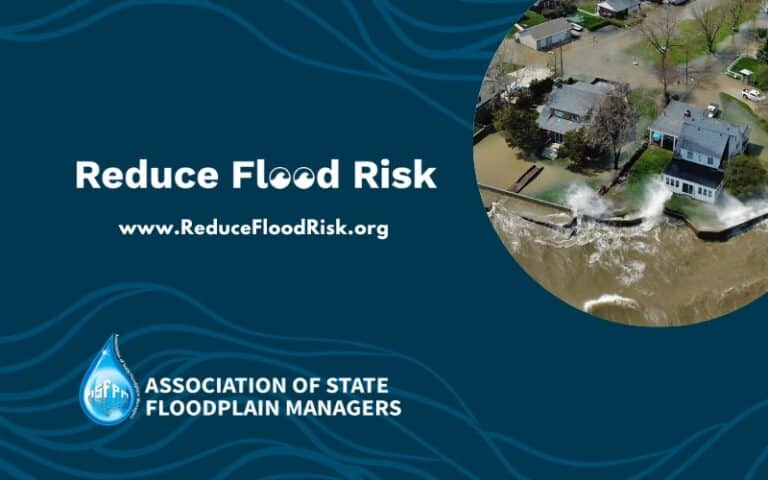As Flooding from Climate Change Worsens, Groups Seek to Change Outdated Federal Rules for Building Homes and Infrastructure
WASHINGTON — With millions of people at risk due to worsening flooding and costs of flood recovery rising as the climate continues to warm, groups petitioned the Federal Emergency Management Agency (FEMA) today to update its rules for construction and land-use in floodplains, and to develop maps that project future flood risks. FEMA has not comprehensively amended its building and land-use rules for flood-prone areas since the 1970’s.
NRDC (Natural Resources Defense Council) and the Association of State Floodplain Managers (ASFPM), which represents more than 20,000 flood risk management professionals, jointly filed the petition. By doing so, the groups are making the case that FEMA, through the National Flood Insurance Program (NFIP), must set stronger standards to protect people, property, and infrastructure against increased flood risk, and develop maps that depict the true extent of current and future flooding. FEMA has a legal duty to do both.
“The American dream of home ownership becomes a nightmare when homes are built in areas that flood today and will be more vulnerable in the future,” said Joel Scata, an attorney with NRDC. “FEMA’s building standards do not reflect the threats from climate-related flooding, allowing reckless developers to expand housing in areas projected to flood in our lifetimes. FEMA has the power to spare millions of people the misery of living with rising waters,” said Scata.
“Communities across the country are adopting strong land use and building standards that exceed FEMA’s minimum requirement,” said Chad Berginnis, CFM, executive director of ASFPM. “By applying lessons learned from more than 50 years of managing flood risk, it’s time for FEMA to catch up and help thousands of other communities catch up as well. Updating national standards will help communities be better prepared to handle the floods of today and better anticipate the flood risks of tomorrow — and in doing so, save lives, protect property from the impacts of climate change, and reduce disaster costs. We can and must do better.”
The NRDC and ASFPM petition urges FEMA to prioritize action in these areas:
- Require all new or substantially improved structures to be elevated higher than the 100-year flood to provide a margin of safety for extreme weather events and short-term effects of sea level rise;
- Improve development standards to be better informed by flood risk and help guide development away from high risk flood hazard areas where possible;
- Ensure all new and revised NFIP floodplain maps depict how the floodplain will change over time, especially concerning sea level rise. Communities and developers rely on these maps to guide siting, design, and construction of all housing, commercial development, and public infrastructure.
- Help more homeowners retrofit their homes to the growing threat of climate-related flooding by increasing and making flexible NFIP-related funding.
Flooding poses a significant threat to life, property, and public infrastructure. It is the most common and most costly natural hazard in the United States. Congress created the NFIP to reduce flood damages nationwide and to ease taxpayers’ financial burden for providing disaster recovery. However, flood damages and federal spending on flood recovery are rising; since 1973, NFIP has paid more than $69 billion in flood insurance claims, half of which have occurred in the last 12 years.
The body of science connecting climate change to an increased risk of flooding is clear. FEMA’s own reports since 2000 have connected climate change to the growing frequency and severity of flood events. But those findings have not been used to update federal standards, leaving many cities, towns, and neighborhoods vulnerable to flooding.
###
Founded in 1977, the Association of State Floodplain Managers (ASFPM) is a scientific and educational nonprofit organization dedicated to reducing flood loss in the nation. ASFPM and its 37 chapters represent approximately 20,000 state and local officials as well as other professionals engaged in all aspects of floodplain management and flood hazard mitigation including management of local floodplain ordinances, flood risk mapping, engineering, planning, community development, hydrology, forecasting, emergency response, water resources development, and flood insurance.
NRDC (Natural Resources Defense Council) is an international nonprofit environmental organization with more than 3 million members and online activists. Since 1970, our lawyers, scientists, and other environmental specialists have worked to protect the world’s natural resources, public health, and the environment. NRDC has offices in New York City; Washington, D.C.; Los Angeles; San Francisco; Chicago; Bozeman, Montana; and Beijing. Visit us at www.nrdc.org and follow us on Twitter @NRDC
Media Contacts:
Margie Kelly, NRDC, mkelly@nrdc.org, 541-222-9699
Mary Bart, ASFPM, mary@floods.org, 608-828-6328


